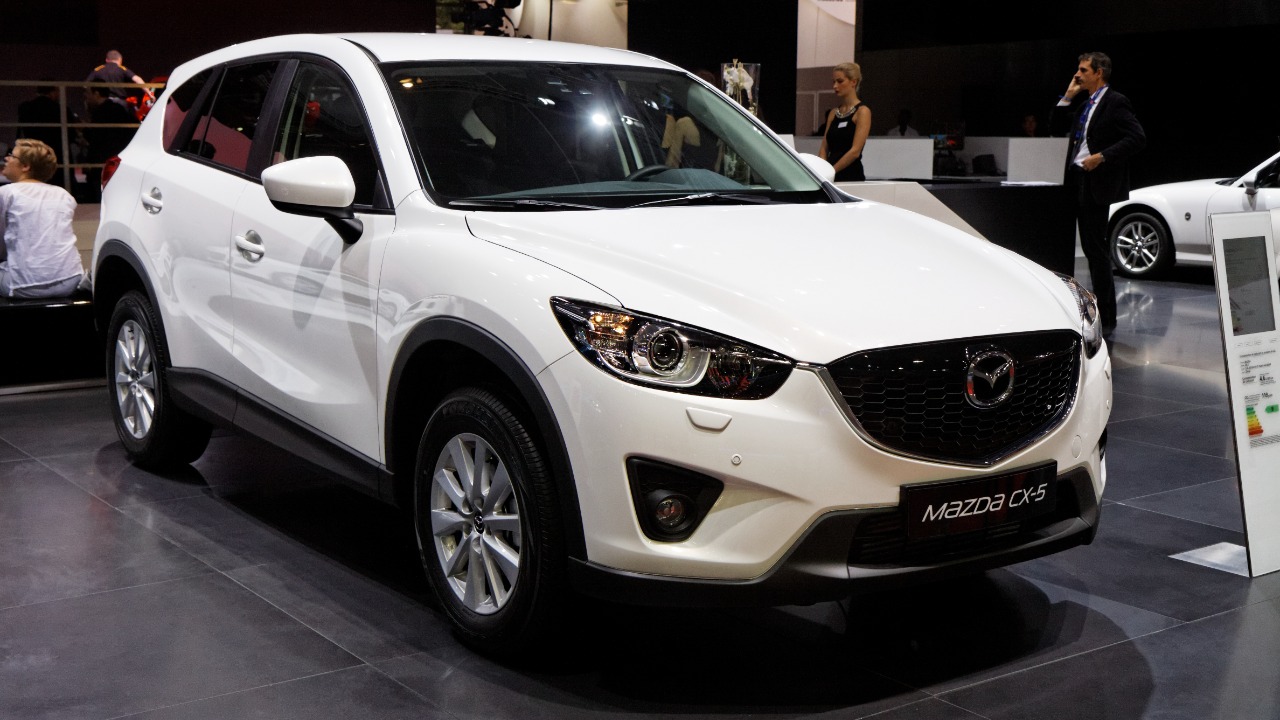
For over a decade, Mazda has been a stalwart defender of tactile controls in its vehicle infotainment systems, prioritizing driver safety and usability over the growing trend of touchscreen interfaces. However, recent reports indicate that the company is now planning to integrate touchscreens into its future models, a significant shift in its design philosophy that has become a focal point in automotive news.
Mazda’s Long-Standing Resistance to Touchscreens
Since the early 2010s, Mazda has consistently prioritized physical buttons and knobs in its vehicle models, such as the Mazda3 and CX-5. This approach was rooted in a “human-centered” design philosophy, which aimed to minimize driver distraction. Mazda executives have often emphasized this approach, contrasting starkly with the industry trends seen in competitors like Toyota and Honda, who have embraced touchscreen-heavy dashboards.
From 2014 onwards, Mazda’s commitment to tactile controls was further evidenced by internal testing data. Mazda engineers found that tactile controls reduced glance times by up to 20% compared to touch interfaces, reinforcing their belief in the safety and usability of physical buttons and knobs.
Industry Pressures Driving the Change
Despite Mazda’s resistance, the automotive industry has been moving towards more smartphone-like features in vehicle infotainment systems. Surveys indicate that 70% of buyers now expect large touchscreens in new vehicles, a demand that Mazda can no longer ignore. In addition, upcoming EU mandates for intuitive infotainment by 2026 favor versatile interfaces, adding regulatory pressure to the mix.
Furthermore, the success of competitors who have adopted touchscreen interfaces has likely influenced Mazda’s decision. For instance, Tesla’s all-touchscreen Model 3 has outsold traditional setups, demonstrating the market’s preference for modern, touchscreen-based interfaces.
Key Reasons Behind Mazda’s Initial Holdout
Mazda’s initial resistance to touchscreens was not without reason. Studies from the Insurance Institute for Highway Safety (IIHS) have shown that touchscreen use increases crash risk by 23% due to visual demands, validating Mazda’s safety concerns. Furthermore, Mazda’s brand identity is deeply rooted in the concept of “Jinba Ittai” (horse and rider unity), where physical controls were seen as essential for intuitive driving.
Cost factors also played a role in Mazda’s decision. Early touchscreen technology was expensive and unreliable, leading Mazda to invest in rotary dials instead. However, as touchscreen technology has improved and become more affordable, this cost barrier has diminished.
The Announcement of Mazda’s Touchscreen Adoption
On October 22, 2025, Mazda executives announced at a Tokyo press event that they would be integrating touchscreens into the next-generation CX-90 SUV. This marks a significant shift in Mazda’s design philosophy, but the company is keen to maintain its commitment to driver safety and usability.
The planned integration will include a 12-inch hybrid display that combines touch and physical controls, easing the transition for drivers accustomed to Mazda’s traditional interface. Mazda’s design chief stated, “We’re evolving without abandoning our core principles,” highlighting the company’s commitment to its “human-centered” design philosophy even as it embraces new technology.
Details of the Upcoming Implementation
Mazda plans to roll out the first touchscreen-equipped models in Japan by late 2026, followed by U.S. launches in 2027. The new systems will feature capacitive touch panels with haptic feedback to mimic button presses, providing a familiar feel for drivers while offering the convenience and versatility of a touchscreen interface.
Importantly, Mazda has also addressed backward compatibility, ensuring that older models like the Miata will retain their analog controls. This decision reflects Mazda’s commitment to its existing customer base, while also paving the way for the future.
Implications for Mazda’s Future Lineup
This shift towards touchscreen interfaces could significantly boost Mazda’s sales in tech-savvy markets. Some projections suggest a 15% increase in North American volume as a result of this change. However, the transition also presents potential challenges, such as ensuring software update reliability, a common issue with infotainment systems in rival brands.
Furthermore, the adoption of touchscreens could have broader design implications, such as simplified dashboards that free up space for larger center consoles. This could further modernize Mazda’s vehicle interiors, aligning them with current industry trends.
Reactions from Experts and Consumers
Automotive analysts have had mixed reactions to Mazda’s announcement. Some have praised the company’s hybrid approach as a “smart compromise,” while others worry that the move could dilute Mazda’s unique appeal. Consumer feedback has also been varied, with early polls showing 60% approval but calls for customizable options.
Enthusiast forums have been buzzing with debate following the announcement, reflecting divided opinions among Mazda’s loyal fan base. As the company moves forward with its plans, it will be interesting to see how these discussions evolve and how Mazda’s touchscreen-equipped models are received by consumers and critics alike. For more details about Mazda’s touchscreen reversal, check out this report.
More from MorningOverview